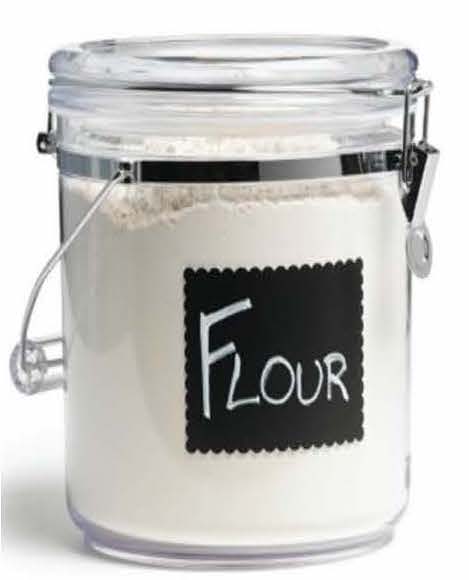Whole Wheat Flour Storage

With so many baking flour selections on the market, choosing the correct one may be challenging. Some of the most popular flours include whole wheat, white, self-rising, and all purpose. Whole wheat flour and white flour can often be used interchangeably for most dishes. However, for those recipes calling exclusively for whole wheat flour, it may be helpful to know basic facts and proper storage techniques (especially if buying in bulk).
Whole grains are made from the entire wheat kernel which is a source of fiber and antioxidants (North Carolina Homegrown). Grains should have a slightly sweet smell or no smell at all (Whole Grain Council). If shopping for bulk flour or baking a recipe which only calls for a small amount of whole wheat flour, storing the remainder properly will ensure optimal freshness. The storage of whole wheat flour varies from other types.
Before storing, keep in mind that heat, air, and moisture are the enemies of whole wheat flour (Whole Grain Council). You’ll want to ensure that you have an airtight container, whether it’s plastic, glass, or aluminum. If you don’t have a container, a gallon size bag can be used. Making certain that air is sealed out of the container or bag also prevents flavors and odors from absorbing into the flour (King Author Baking Company).
Flour storage should be:
- Cold: Freezer or Refrigerator.
- Dark: If storing flour in the freezer consider placing at the bottom, away from the light and warmth (when the freezer is open). If storing in the refrigerator, place at the back as well.
- Airtight: Place flour in a plastic bag and remove as much air as possible. Use a vacuum sealer if possible. A top lid container is also recommended.
(All Recipes)

(University of Georgia Cooperative Extension)
If you decide to store whole wheat flour in a pantry at room temperature, discard after one month.
Fun Facts:
- 80% of NC wheat grown is used for livestock feed, 20% is used for human consumption to make flour.
- On average, North Carolina grows 500,000 acres (+ or -) of wheat every year throughout the state.
- 1 bushel of wheat can make 45 loaves of bread. The farmer receives approximately $5.00 per bushel, while the grocery store receives $140 for 45 loaves of bread. THANK A FARMER.
(North Carolina State University Extension)
North Carolina State University Extension has other great facts on wheat production in the state.
References:
- All Recipes (2021, January 29). How to store flour so it stays fresh.
https://www.allrecipes.com/article/how-to-store-flour/
- King Author Baking Company (2019, April 11). The best way to store whole grains. https://www.kingarthurbaking.com/blog/2019/04/11/best-way-store-whole-grains
- North Carolina State University Extension Homegrown (2019, February 19). What’s the difference? Whole grains vs. enriched grains. https://homegrown.extension.ncsu.edu/wp-content/uploads/2019/02/Wheat-Info-Handout_NCSGGA.pdf
- University of Georgia Cooperative Extension (2011, June). Food storage for safety & quality. https://www.fcs.uga.edu/docs/FDNS-E-119.pdf
- Whole Grain Council (n.d.). Storing whole grains. https://wholegrainscouncil.org/recipes/cooking-whole-grains/storing-whole-grains
For questions about the Supplemental Nutrition Assistance Program or to receive SNAP Application Assistance contact the More In My Basket staff:
Visit: morefood.org
English Toll Free: 1-855-240-1451
Spanish Toll Free: 1-888-382-7105
Leave a Reply